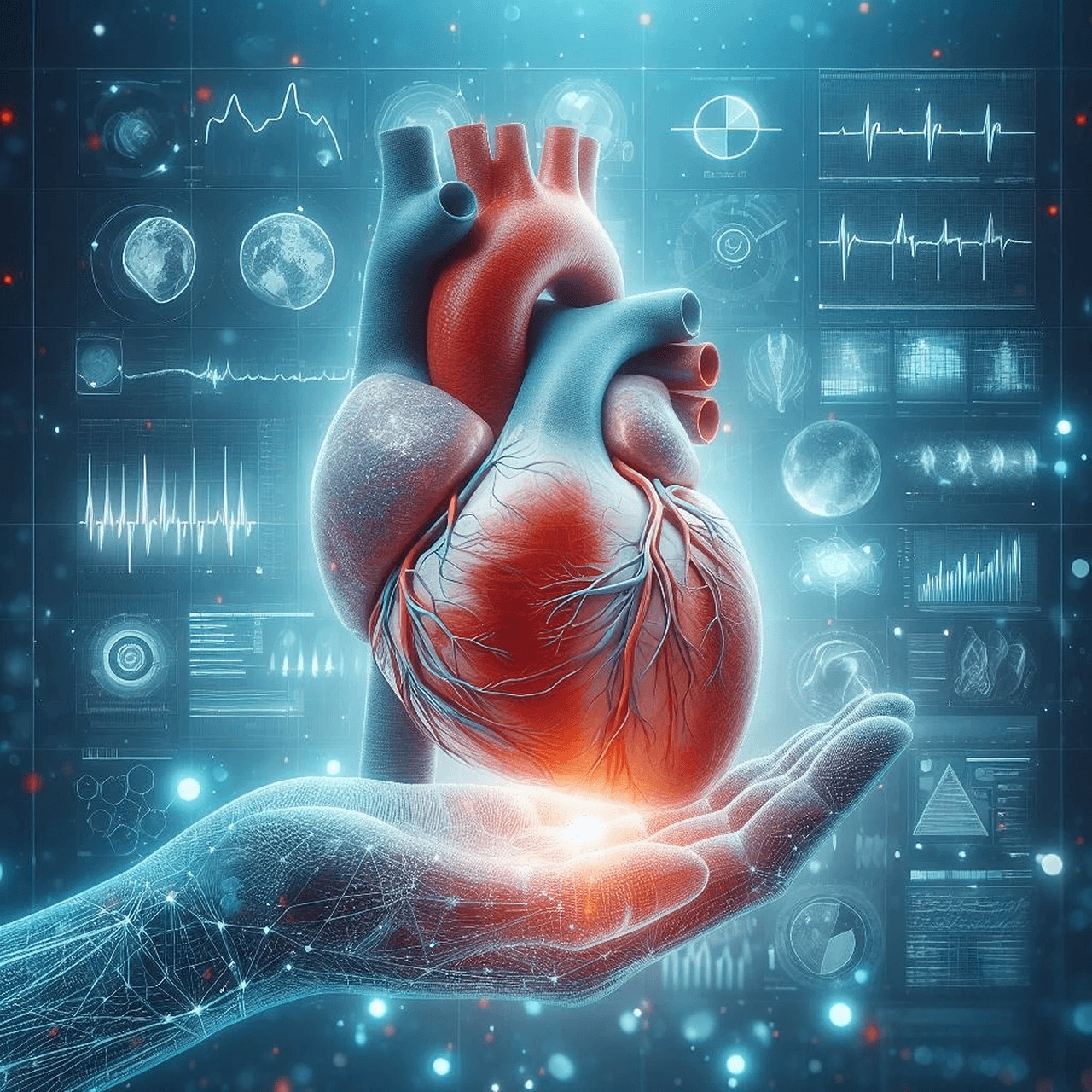
Advanced Cardiology in the UK: Cutting-Edge Treatments for Heart Conditions
23 Jul, 2024
 Healthtrip Team
Healthtrip Team1. Transcatheter Aortic Valve Replacement (TAVR)
Aortic valve replacement has long been a critical procedure for patients with severe aortic stenosis, traditionally requiring open-heart surgery. However, Transcatheter Aortic Valve Replacement (TAVR) represents a groundbreaking advancement in cardiovascular care, offering a minimally invasive alternative that has transformed the landscape of valve replacement.
Most popular procedures in India
TAVR is a sophisticated procedure designed to replace a damaged or diseased aortic valve with a new, artificial valve using a catheter-based technique. Instead of making a large incision in the chest, TAVR involves threading a catheter through a small incision, typically in the groin or chest, and guiding it to the heart. Once in place, the new valve is expanded within the old valve and takes over its function.
Wellness Treatments
Give yourself the time to relax
Lowest Prices Guaranteed!

Lowest Prices Guaranteed!
Advantages of TAVR
1. Minimally Invasive Approach: One of the most significant advantages of TAVR is its minimally invasive nature. By avoiding the need for open-heart surgery, TAVR reduces the risk of complications and the physical trauma associated with traditional procedures.
2. Faster Recovery: Patients undergoing TAVR often experience a much quicker recovery compared to those who have traditional valve replacement surgery. Many patients can return to their normal activities within a few days to weeks, rather than the several weeks required for recovery from open-heart surgery.
3. Reduced Risk for High-Risk Patients: TAVR is particularly beneficial for patients who are considered high-risk for conventional surgery due to factors such as age, frailty, or other health conditions. The procedure provides these patients with a viable treatment option and can significantly improve their quality of life.
4. Improved Outcomes: Studies have shown that TAVR is associated with lower mortality rates and fewer complications compared to traditional surgical methods, especially in high-risk patient populations.
Procedure and Aftercare
The TAVR procedure typically involves general anaesthesia, and patients may be under sedation or conscious sedation during the operation. The catheter is inserted through a small incision and guided to the heart using advanced imaging techniques such as fluoroscopy or echocardiography.
Post-procedure, patients usually spend a few days in the hospital for monitoring and recovery. While the recovery time is generally shorter, patients are still closely observed for any potential complications and to ensure the new valve is functioning correctly.
Future Directions
Research and advancements in TAVR technology continue to evolve, with ongoing studies focusing on expanding its indications, improving valve designs, and refining techniques. Innovations in imaging and catheter technologies are likely to further enhance the precision and effectiveness of the procedure.
In summary, TAVR has revolutionized the field of cardiovascular care by offering a less invasive, safer, and more effective option for aortic valve replacement. Its impact is particularly profound for patients who face significant risks with traditional surgical approaches, marking a significant advancement in the management of aortic stenosis.
2. Left Atrial Appendage Occlusion (LAAO)
Atrial fibrillation (AFib) is a common heart rhythm disorder that significantly increases the risk of stroke due to the formation of blood clots in the left atrial appendage (LAA). To mitigate this risk, Left Atrial Appendage Occlusion (LAAO) has emerged as a crucial intervention, offering a solution for patients who are unable to manage their stroke risk through traditional anticoagulant medications.
Left Atrial Appendage Occlusion (LAAO) is a procedure aimed at reducing the risk of stroke in patients with AFib by sealing off the left atrial appendage, a small pouch in the heart where blood clots are most likely to form. This procedure is designed for patients who have a high risk of stroke but cannot tolerate or do not wish to take long-term anticoagulants, such as warfarin or novel oral anticoagulants.
1. Device Implantation: LAAO is performed using a minimally invasive technique. A catheter is inserted through a small incision, usually in the groin or chest, and guided to the heart. Once the catheter reaches the left atrial appendage, a small device is deployed to occlude or close off the appendage. This device is typically made of a metal framework covered with a fabric or mesh material that securely seals the area.
2. Imaging Guidance: Advanced imaging technologies, such as transesophageal echocardiography (TEE) or fluoroscopy, are used to accurately position the device and ensure proper placement. These imaging techniques help the cardiologist visualize the heart structures and confirm the device's effectiveness in occluding the appendage.
Benefits of LAAO
1. Reduced Stroke Risk: By sealing off the left atrial appendage, LAAO significantly reduces the risk of stroke, especially in patients who are at high risk of clot formation due to their AFib.
2. Alternatives to Anticoagulants: For patients who experience adverse effects from anticoagulant medications or prefer not to take them, LAAO provides an effective alternative. It allows patients to avoid the risks associated with long-term use of blood thinners, such as bleeding complications.
3. Minimally Invasive: The procedure is minimally invasive, which means that it typically involves less recovery time and fewer complications compared to open-heart surgery. Most patients can resume their normal activities relatively quickly after the procedure.
Procedure and Aftercare
LAAO is generally performed under general anaesthesia or conscious sedation. The catheter-based approach minimizes the need for large incisions, reducing the risk of postoperative pain and complications.
After the procedure, patients are usually monitored for a short period to ensure the device is functioning correctly and to manage any immediate postoperative concerns. Follow-up care involves periodic imaging to verify that the left atrial appendage remains sealed and to monitor the patient’s overall heart health.
Future Directions
Ongoing research is focused on improving LAAO devices, refining procedural techniques, and expanding the indications for this treatment. Advances in technology are expected to further enhance the effectiveness and safety of LAAO, making it an even more viable option for patients with AFib.
In summary, Left Atrial Appendage Occlusion (LAAO) offers a promising alternative for stroke prevention in patients with atrial fibrillation who are not ideal candidates for long-term anticoagulation. By effectively closing off the left atrial appendage, LAAO helps to mitigate the stroke risk associated with AFib, improving patient outcomes and quality of life.
3. Genetic and Personalized Cardiology
The integration of genetic testing into cardiovascular care represents a paradigm shift in how we understand and treat heart diseases. As we delve deeper into the genetic underpinnings of cardiovascular conditions, healthcare providers are now equipped to offer highly personalized treatment plans tailored to each individual’s unique genetic makeup. This approach enhances both the accuracy of diagnosis and the effectiveness of treatment strategies, marking a significant advancement in cardiology.
Genetic and personalized cardiology involves using genetic information to guide the diagnosis, treatment, and management of cardiovascular diseases. This field leverages insights from genetic testing to identify hereditary risk factors, predict disease onset, and customize therapeutic interventions. By understanding the specific genetic variations that contribute to a patient’s cardiovascular condition, healthcare providers can deliver more targeted and effective care.
Applications of Genetic Testing in Cardiology
1. Risk Assessment and Early Detection: Genetic testing can reveal predispositions to various heart conditions, such as familial hypercholesterolemia, hypertrophic cardiomyopathy, and congenital heart defects. By identifying individuals at high risk, healthcare providers can implement early intervention strategies to prevent or manage these conditions more effectively.
2. Personalized Treatment Plans: Once genetic predispositions are identified, treatment plans can be customized to address the specific genetic factors involved. For instance, patients with genetic mutations linked to high cholesterol levels may benefit from targeted medications or lifestyle changes designed to address their unique genetic profile.
3. Predictive Analytics: Genetic information allows for more accurate prediction of disease progression and response to treatment. This predictive capability helps healthcare providers tailor interventions to each patient’s anticipated disease course, improving outcomes and minimizing adverse effects.
4. Family Planning and Genetic Counseling: For individuals with hereditary cardiovascular conditions, genetic testing provides valuable information for family planning and counselling. Understanding genetic risks can help families make informed decisions about preventive measures and potential treatments.
Benefits of Genetic and Personalized Cardiology
1. Enhanced Diagnostic Accuracy: Genetic testing enables precise identification of genetic variants associated with cardiovascular diseases. This accuracy helps in distinguishing between different types of heart conditions, leading to more accurate diagnoses.
2. Optimized Treatment Strategies: Personalized treatment plans are based on an individual’s genetic profile, ensuring that therapies are tailored to their specific needs. This approach enhances the effectiveness of treatments and reduces the likelihood of adverse reactions.
3. Improved Patient Outcomes: By addressing the root causes of cardiovascular conditions and customizing interventions, genetic and personalized cardiology improves overall patient outcomes. Patients receive care that is more relevant to their unique genetic makeup, leading to better management of their conditions.
4. Proactive Healthcare: Genetic testing facilitates a proactive approach to healthcare, allowing for early detection and intervention. This proactive stance helps prevent the progression of cardiovascular diseases and enhances long-term health.
Challenges and Future Directions
While genetic and personalized cardiology offers numerous benefits, there are challenges to address, including the interpretation of complex genetic data, ethical considerations related to genetic information, and the need for further research to refine treatment approaches.
Future advancements in genetic technology and data analysis are expected to further enhance the precision and applicability of personalized cardiology. Ongoing research will continue to expand our understanding of genetic influences on cardiovascular health, leading to even more effective and personalized treatment options.
In summary, genetic and personalized cardiology represents a transformative approach in cardiovascular care, offering tailored treatment plans based on an individual’s genetic profile. By integrating genetic insights into diagnosis and treatment, this field is paving the way for more accurate, effective, and individualized management of heart diseases.
4. Robotic-Assisted Cardiac Surgery
Robotic-assisted cardiac surgery has revolutionized the field of cardiovascular surgery by offering enhanced precision, control, and minimally invasive techniques. This advanced technology enables surgeons to perform complex cardiac procedures with a level of accuracy and dexterity that was previously unattainable. As a result, patients benefit from smaller incisions, reduced recovery times, and improved surgical outcomes.
Robotic-assisted cardiac surgery involves the use of robotic systems to perform heart surgery through small incisions. The robotic system consists of a console where the surgeon controls robotic arms equipped with specialized instruments. These instruments are inserted through tiny incisions in the chest, allowing the surgeon to perform intricate procedures with enhanced precision.
How Does Robotic-Assisted Surgery Work?
1. Robotic Console: The surgeon sits at a console equipped with high-definition 3D visualization and controls the robotic arms using precise hand movements. The console provides a magnified view of the surgical field, allowing for detailed visualization of the heart’s structures.
2. Robotic Arms and Instruments: The robotic arms are equipped with miniaturized surgical instruments that can perform delicate tasks with high precision. These instruments are designed to mimic the surgeon's movements, translating them into precise actions inside the patient's chest.
3. Minimally Invasive Approach: The procedure is performed through small incisions, which significantly reduces the trauma to surrounding tissues compared to traditional open-heart surgery. This minimally invasive approach results in less postoperative pain and faster recovery.
Benefits of Robotic-Assisted Cardiac Surgery
1. Enhanced Precision and Control: The robotic system provides surgeons with unparalleled precision and control, allowing for intricate manoeuvres and delicate procedures. This precision is especially beneficial in complex surgeries, such as valve repairs and coronary artery bypass grafting (CABG).
2. Reduced Incision Size: The use of small incisions minimizes the risk of infection, reduces scarring, and shortens recovery time. Patients experience less pain and discomfort, leading to a quicker return to their daily activities.
3. Improved Visualization: The high-definition 3D visualization offered by the robotic system enhances the surgeon’s ability to see fine details and make informed decisions during the procedure. This improved visualization contributes to better surgical outcomes.
4. Faster Recovery: Due to the minimally invasive nature of the procedure, patients typically experience a shorter hospital stay and a faster overall recovery. This leads to a quicker return to normal activities and an improved quality of life.
Common Applications
1. Valve Repairs and Replacements: Robotic-assisted surgery is often used for repairing or replacing heart valves. The precision of robotic systems allows for meticulous repairs and accurate placement of prosthetic valves.
2. Coronary Artery Bypass Grafting (CABG): For patients requiring CABG, robotic-assisted techniques enable the surgeon to perform bypasses with minimal disruption to surrounding tissues. This approach can be particularly advantageous for patients with complex coronary artery disease.
3. Atrial Septal Defect (ASD) Closure: Robotic-assisted surgery is also used to close atrial septal defects, which are holes in the heart’s septum. The precision of robotic systems ensures accurate closure with minimal invasiveness.
Challenges and Future Directions
While robotic-assisted cardiac surgery offers numerous advantages, it also comes with challenges, including the high cost of robotic systems, the need for specialized training, and potential limitations in terms of accessibility. Ongoing advancements in robotic technology and continued research are expected to address these challenges and expand the applications of robotic-assisted surgery.
In summary, robotic-assisted cardiac surgery represents a significant advancement in the field of cardiovascular surgery. By combining precision, control, and minimally invasive techniques, this technology enhances surgical outcomes and improves the overall patient experience. As robotic systems continue to evolve, they hold the promise of further revolutionizing cardiac care and expanding treatment options for patients with complex heart conditions.
5. Advanced Heart Failure Therapies
The management of heart failure has undergone a transformative evolution with the advent of advanced therapies and innovative devices. These advancements have significantly improved the quality of life and survival rates for patients with severe heart failure. From cutting-edge pharmacological agents to sophisticated cardiac devices, the latest therapies offer new hope for individuals battling this challenging condition.
New Pharmacological Agents
1. SGLT2 Inhibitors: Sodium-glucose co-transporter 2 (SGLT2) inhibitors, originally developed for diabetes management, have shown remarkable benefits in heart failure. These drugs help reduce hospitalization rates and improve heart failure symptoms by promoting diuresis and reducing fluid overload. Examples include empagliflozin and dapagliflozin.
2. ARNI (Angiotensin Receptor-Neprilysin Inhibitors): ARNIs represent a novel class of medications that combine the effects of angiotensin receptor blockers (ARBs) with neprilysin inhibitors. This combination improves heart failure outcomes by reducing harmful neurohormonal activity and promoting vasodilation. Sacubitril/valsartan (Entresto) is a prominent example of an ARNI.
3. Updated Beta-Blockers: Recent advancements have refined the use of beta-blockers in heart failure. Newer-generation beta-blockers like carvedilol and metoprolol succinate are increasingly used to manage symptoms and improve survival, with ongoing research focusing on optimizing their use.
Advanced Cardiac Devices
1. Left Ventricular Assist Devices (LVADs): LVADs are mechanical pumps designed to assist the left ventricle in pumping blood to the rest of the body. They are used in patients with advanced heart failure who are not candidates for heart transplantation. LVADs can significantly improve symptoms, exercise tolerance, and survival rates.
- Continuous Flow vs. Pulsatile Flow LVADs: Continuous flow LVADs are now more commonly used due to their superior outcomes and lower complication rates compared to pulsatile flow devices. They provide a steady flow of blood and are known for their durability and efficiency.
2. Implantable Cardioverter Defibrillators (ICDs): ICDs are devices implanted to monitor heart rhythms and deliver electrical shocks if a dangerous arrhythmia is detected. They are crucial for preventing sudden cardiac death in patients with severe heart failure and specific arrhythmic risks.
3. Biventricular Pacemakers (Cardiac Resynchronization Therapy - CRT): CRT uses a specialized pacemaker to coordinate the contractions of both the left and right ventricles. This therapy improves cardiac function and symptoms in patients with heart failure and significant left bundle branch block (LBBB).
Innovative Therapies
1. Gene Therapy: Gene therapy is an emerging field that aims to correct genetic defects responsible for heart failure or modify genes to enhance heart function. Although still in experimental stages, it holds promise for targeted treatment of genetic forms of heart failure.
2. Stem Cell Therapy: Stem cell therapy involves using stem cells to repair or regenerate damaged heart tissue. Research is ongoing to evaluate the efficacy of stem cell treatments in improving cardiac function and reversing heart failure.
3. Wearable Cardiac Monitors: Advances in wearable technology now allow for continuous monitoring of heart function and symptoms. These devices can provide real-time data on heart health, enabling early intervention and personalized management.
Future Directions
Ongoing research and technological advancements are continually shaping the future of heart failure management. Efforts are focused on refining existing therapies, developing new pharmacological agents, and improving device technology. The goal is to further enhance patient outcomes, reduce complications, and offer more personalized treatment options.
In summary, advanced heart failure therapies have revolutionized the management of this condition, providing patients with improved options for treatment and symptom management. The combination of innovative pharmacological agents and advanced cardiac devices has significantly enhanced the quality of life and survival rates for individuals with severe heart failure. As research continues to progress, these therapies will likely evolve further, offering even greater hope for those affected by heart failure.
Most popular wellness packages
Related Blogs
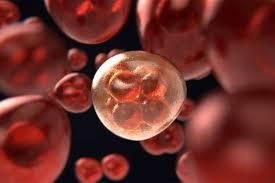
Exploring the Latest Advances in Prostate Cancer Treatments in the UK
Prostate cancer is the most common cancer among men in
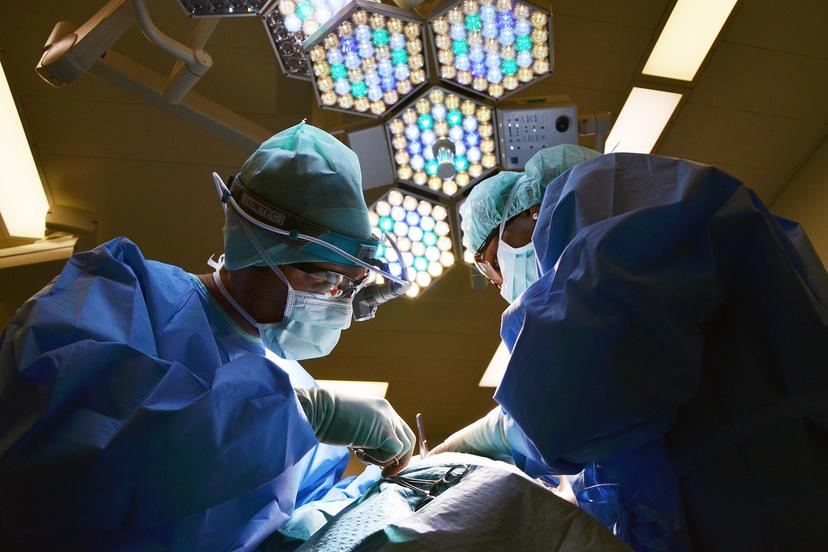
Advanced Treatment Options in Spinal Surgery
In recent years, the United Kingdom has emerged as a

Cutting-edge diagnostic Technologies at Bumrungrad International Hospital
Bumrungrad International Hospital is renowned for its commitment to employing
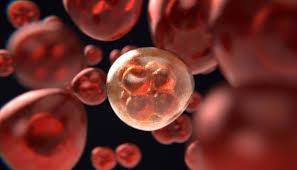
Cutting-Edge Bladder Cancer Treatments at Bumrungrad Hospital
In recent years, the UAE has emerged as a global
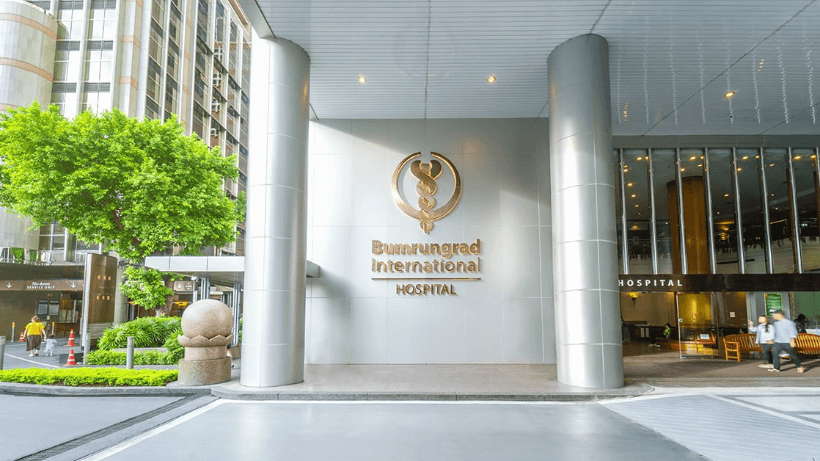
Innovative Breast Cancer Surgery at Bumrungrad
Breast cancer remains one of the most common cancers affecting
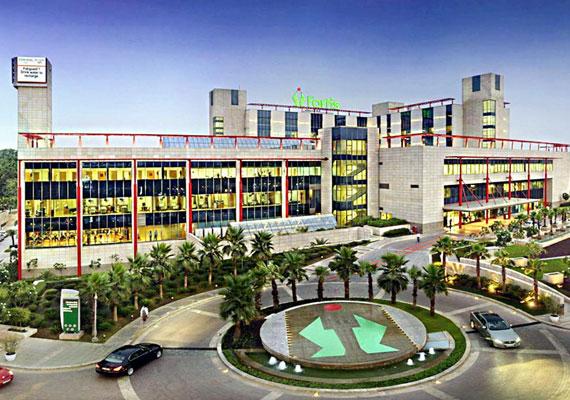
A Comprehensive Cardiac Care at Fortis Memorial Research Institute (FMRI) Gurgaon, India
Ensuring your heart receives the best care is vital, but










